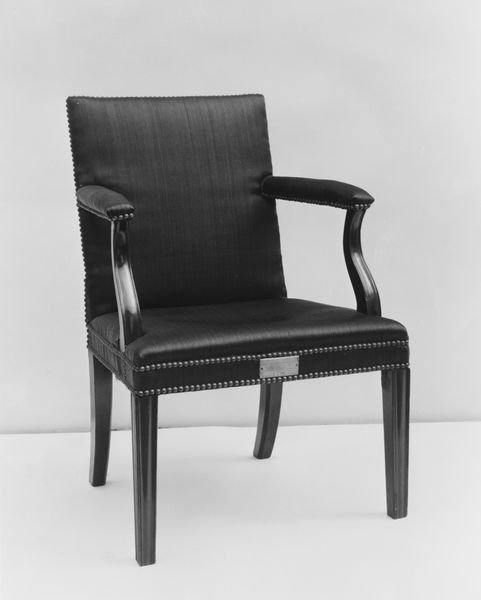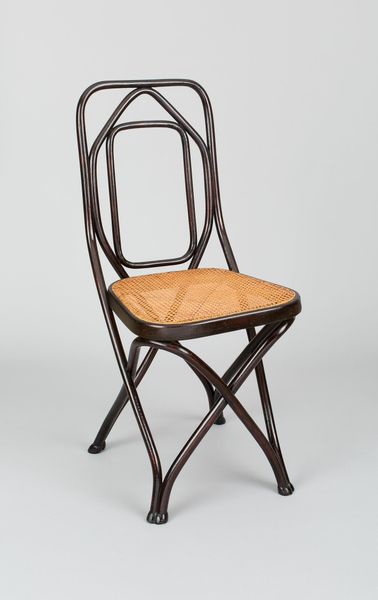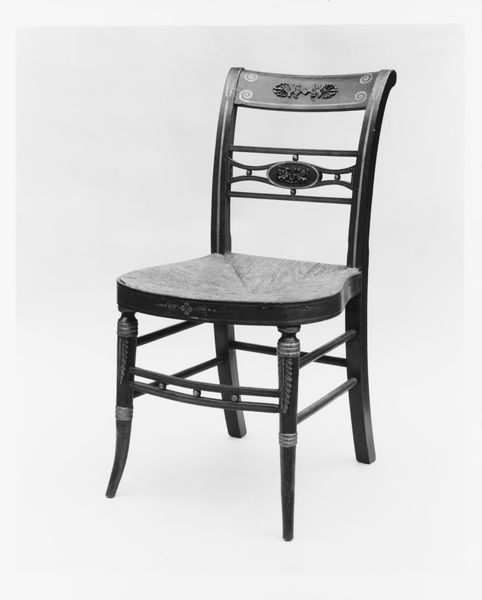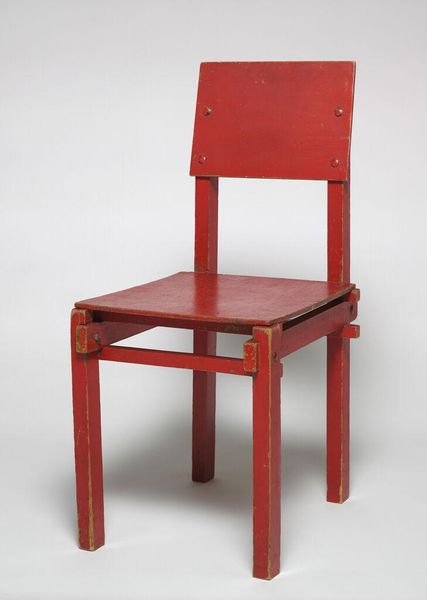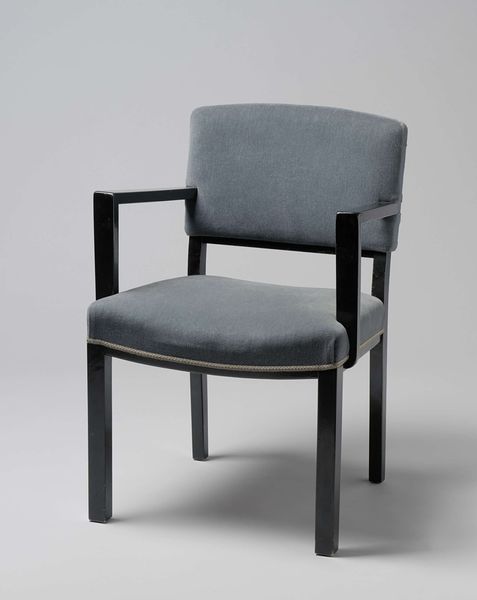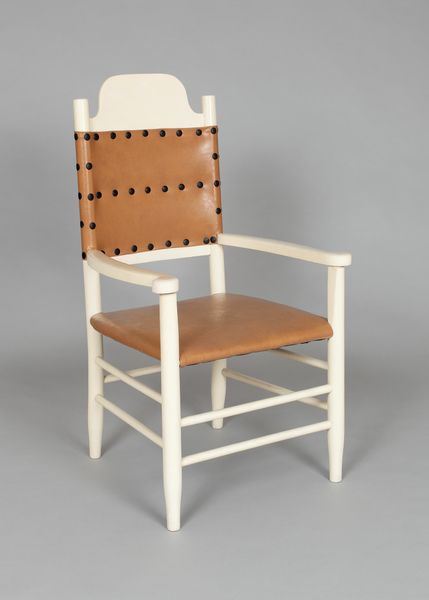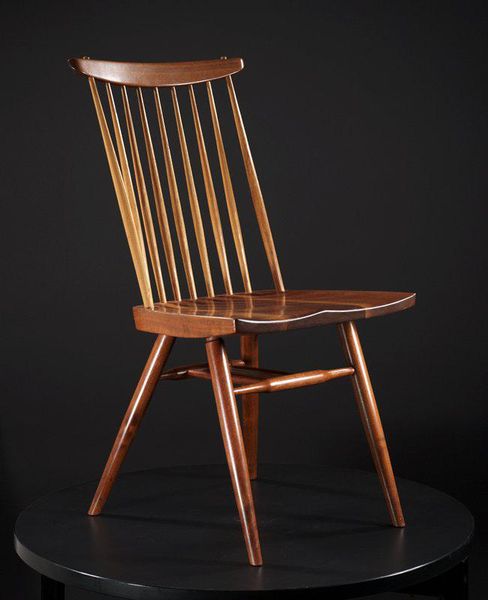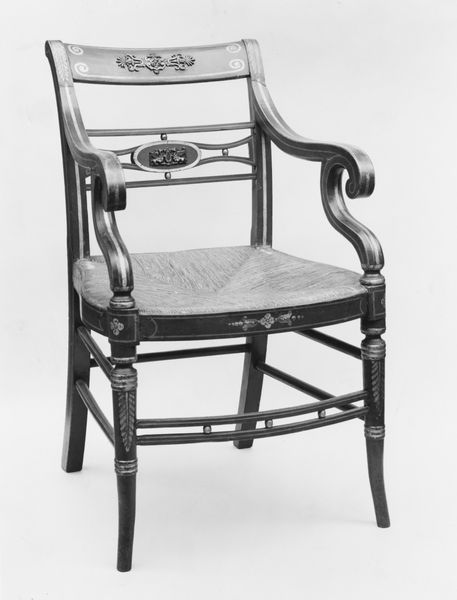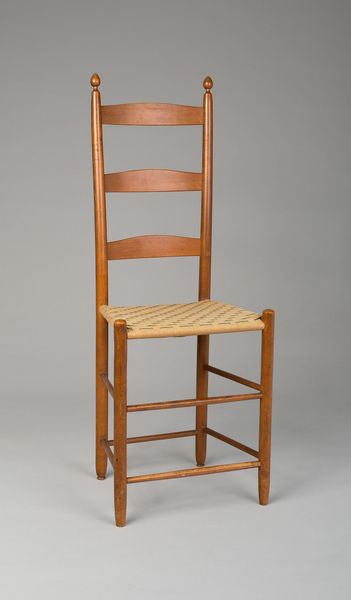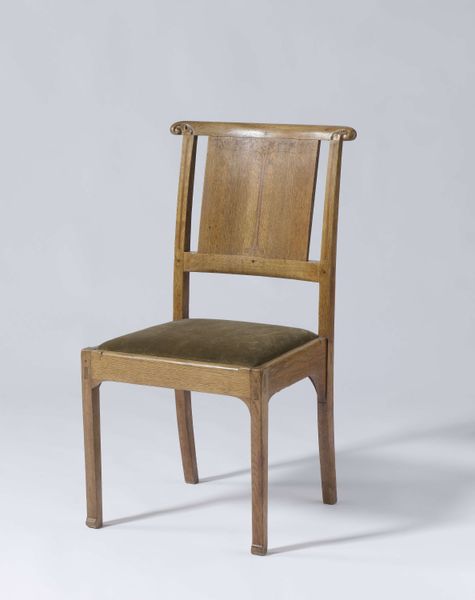
#
art-nouveau
#
furniture
#
form
#
line
#
modernism
Dimensions: 30 5/8 x 22 1/2 x 22 in. (77.79 x 57.15 x 55.88 cm)
Copyright: Public Domain
Editor: This is Otto Wagner’s "Armchair," from around 1902, here at the Minneapolis Institute of Art. It’s crafted from bentwood, leather, and what looks like aluminum. The bright leather pops against the dark frame; it seems both functional and surprisingly elegant. What strikes you about this piece? Curator: What interests me most is the social context of its production. This isn't simply a chair; it’s a commentary on industrial design and craftsmanship. The bentwood and leather indicate mass production techniques meeting artisanal skill. Notice how the aluminum feet, perhaps a modern touch, ground the piece, literally connecting it to the floor of industry and commerce. Editor: So you see the materials themselves as carrying a kind of message? The blend of factory-made and handmade? Curator: Precisely! It reflects a key tension in early 20th-century design: how to reconcile the efficiency of industrial production with the desire for unique, aesthetically pleasing objects. This chair straddles that divide, showcasing both the potential and the limitations inherent in material culture. We must remember that chairs like these would furnish modern apartments and offices. The comfort provided relates directly to a new working and home lifestyle of this time. Editor: That makes me think about who this chair was designed *for*, and what their lives might have been like. Curator: Exactly! Who would have bought this chair, and what values did they hold? Considering material consumption is an act loaded with meanings. It is clear that the materials involved -bentwood, aluminum, and fine leather, were combined to evoke the aspirations of an increasingly progressive clientele who were eager to consume industrial products with historical associations. Editor: I never thought about furniture this way! Focusing on materials and production gives me so much more to consider about even simple design objects. Curator: That is precisely the value in deconstructing art through a materialist lens; it reminds us that even everyday objects embody complex relationships between producers, consumers, and the wider world.
Comments
minneapolisinstituteofart about 2 years ago
⋮
Yet to receive the credit he deserves, Otto Wagner was the patriarch of Viennese modernity. Among his students were Adolf Loos, Josef Maria Olbrich, Josef Hoffmann and Leopold Bauer to name a few. This chair precedes a variant armchair (1904-06) designed for his famous Postal Savings Bank in Vienna. The chair form was subsequently produced commercially in several variations by J. & J. Kohn and the rival firm Gebrüder Thonet which likewise produced furnishings for the Savings Bank. Wagner was the first of his colleagues to incorporate aluminum into his interior elements and furniture.
Join the conversation
Join millions of artists and users on Artera today and experience the ultimate creative platform.
